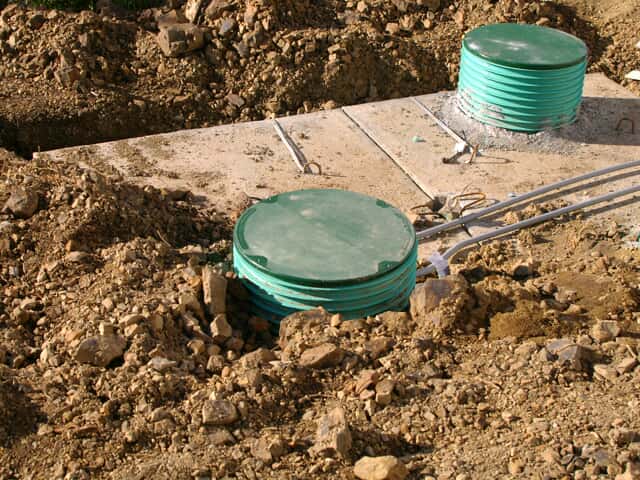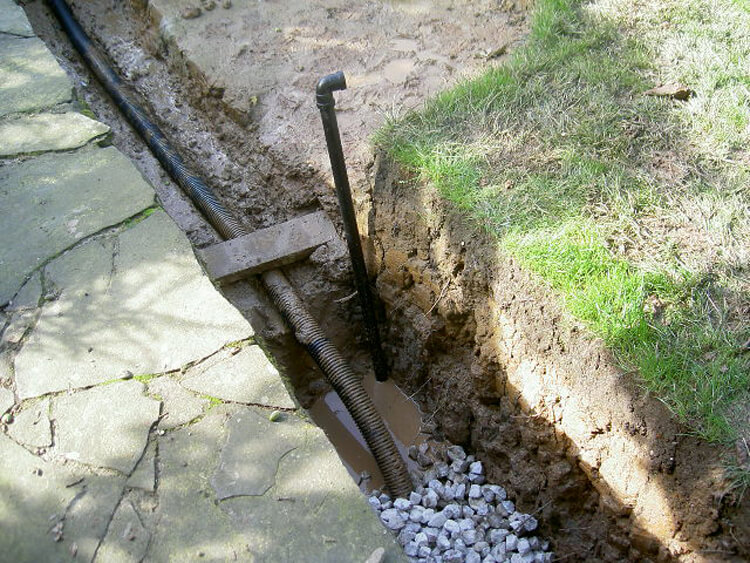Clay soil is thick and rich in nutrients making it the best choice for growing plants.
It anchors roots in the soil and provides a good foundation for them.
Sadly, this type of soil doesn’t do well when it comes to septic systems.
Such systems require porous soil to efficiently absorb effluent into the leach field. Clay is one of the least porous soils.
Fortunately, you can install a septic tank in clay. You just have to be smart about it lest you run into problems with your septic system.
In this post, I will discuss some of the best septic systems for clay soil.
The Problem With Clay Soil
Clay soil is not the best when it comes to drainage. The reason is that it is made of densely packed, fine particles.
It also forms tight layers that make it hard for water to pass through. After precipitation in clay soil, you are likely to run into drainage issues.
A septic system relies on good soil to absorb effluent in the drain field.
Clay soil presents a challenge as it doesn’t allow the effluent to pass through effectively.
This means that water from the septic tank will not reach the drain field as it should.
At best, partially treated water will collect around the septic tank.
At worst, it will overflow and be carried off with runoff water to the nearby water bodies. Backups are also highly likely to occur.
Best Types Of Septic Systems For Clay Soils

Installing a septic tank in an area with clay soil is quite a challenge.
The best option is to be connected to a municipal sewage treatment system.
But if you don’t have that luxury, you can use any of the following septic systems on clay soil.
1. Pressure-Dosed System
Under normal circumstances, effluent leaving the septic tank sips into the ground by way of gravity.
However, since clay soil particles are impenetrable, the use of a pump to distribute the wastewater in the drain field is necessary.
In a pressure-dosed system, the effluent is pressurized to a specific distribution box or pumping chamber from where regular doses of the effluent are evenly distributed throughout the leach lateral sections.
The chamber essentially has a network of pressure-fed distribution pipes.
This system limits the rate of effluent flowing into the leach field thus aiding the treatment process.
2. Mound System
As the name goes, a mound septic system uses a mound of soil to filter effluent from a septic tank before it is released into the soil.
The soil creates a sort of raised drain field above the natural surface.
Effluent from the septic tank flows to a designated pump chamber.
From there, it is pumped to the raised soil bed/mound in regulated doses.
As it flows through gravity towards the soil beneath, it gets treated.
The mound often has a bed of sand and another one of gravel which filters the effluent.
This system is great for areas with clay soil as it further treats effluent water before it reaches the soil.
Granted, it is more expensive to install but it does the job.
Mound septic systems actually allow for better effluent absorption into the drain field than conventional systems.
3. Aerobic Treatment Unit (ATU)
An Aerobic Treatment unit is yet another septic system that can be used in clay soil.
This refers to a small-scale wastewater treatment system that makes use of an aerobic process (adding air or oxygen in the tank) for better digestion of waste.
The unit essentially introduces oxygen into the wastewater treatment tank.
The oxygen increases bacterial activity thus providing more treatment of waste in it.
Some aerobic units use two tanks – a pre-treatment and a final tank to better process waste.
The waste is further disinfected/chlorinated to make it cleaner thus eliminating the need for a leach field.
How To Build A Leach Field In Clay
Constructing a drain field in clay pretty much follows the same guidelines of regular leach fields save for a few additional ones.
For one, it should be sufficiently larger than its counterparts. A larger field means a larger surface area for septic tank effluent to drain into the soil.
Consequently, the wastewater will be treated for a longer time than that in a smaller leach field.
It should also be located at least 10m away from the home and gardens/edible plants and about 3-4 feet deep.
Cost Of Installing A Septic System In Clay Soil
The cost of putting up a septic system in clay soil depends on the actual system selected.
For instance, a pressure dosing system will set you back $7,000 – $10,000 while mound and aerobic treatment units will cost $10,000 – $20,000.
The real cost will depend on the size of the tank, the number of pumps used (where necessary), pipes, fittings, etc.
